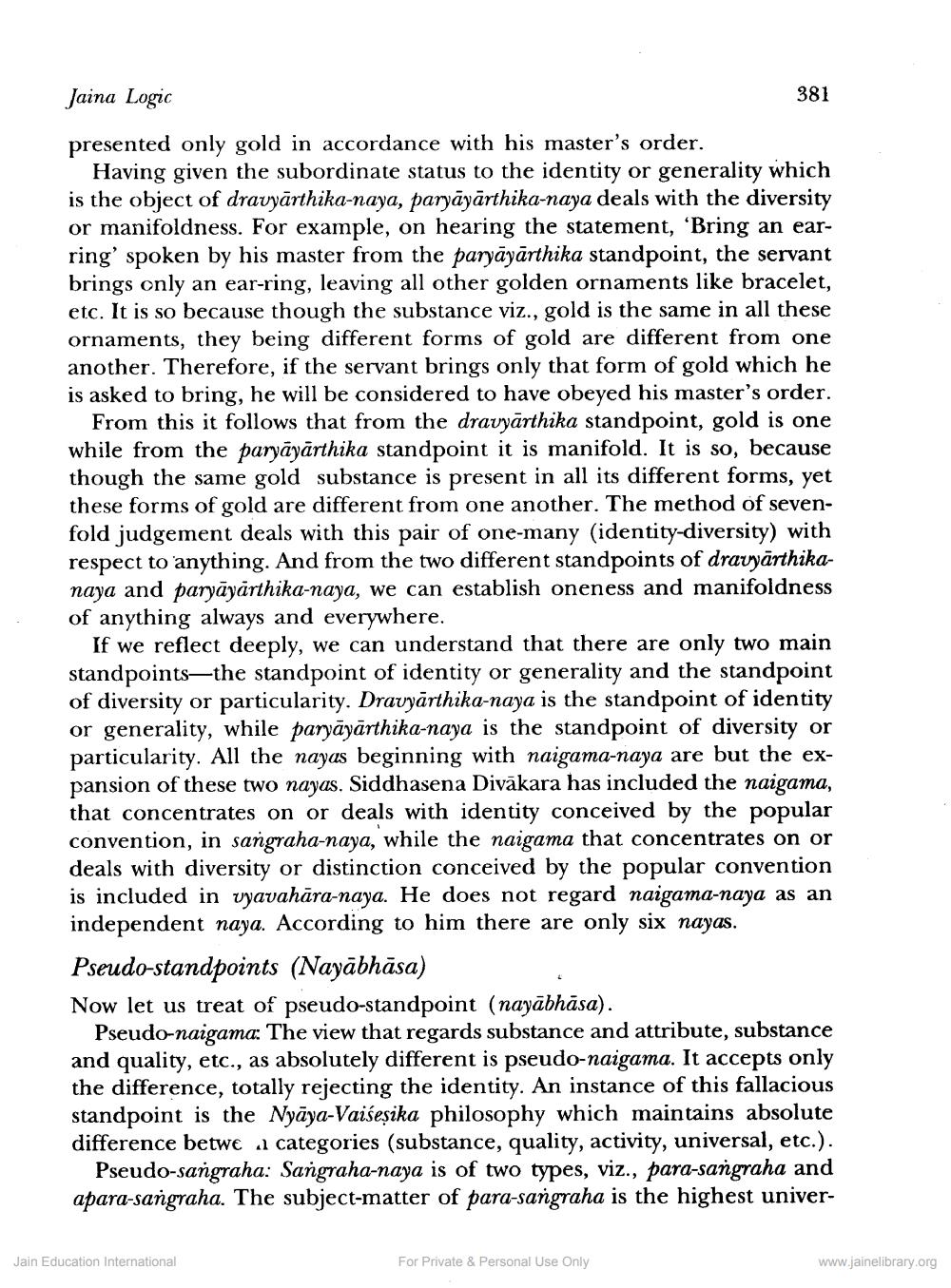________________
Jaina Logic
presented only gold in accordance with his master's order.
Having given the subordinate status to the identity or generality which is the object of dravyarthika-naya, paryāyārthika-naya deals with the diversity or manifoldness. For example, on hearing the statement, 'Bring an earring' spoken by his master from the paryāyārthika standpoint, the servant brings only an ear-ring, leaving all other golden ornaments like bracelet, etc. It is so because though the substance viz., gold is the same in all these ornaments, they being different forms of gold are different from one another. Therefore, if the servant brings only that form of gold which he is asked to bring, he will be considered to have obeyed his master's order.
From this it follows that from the dravyarthika standpoint, gold is one while from the paryayarthika standpoint it is manifold. It is so, because though the same gold substance is present in all its different forms, yet these forms of gold are different from one another. The method of sevenfold judgement deals with this pair of one-many (identity-diversity) with respect to anything. And from the two different standpoints of dravyarthikanaya and paryāyārthika-naya, we can establish oneness and manifoldness of anything always and everywhere.
381
If we reflect deeply, we can understand that there are only two main standpoints the standpoint of identity or generality and the standpoint of diversity or particularity. Dravyarthika-naya is the standpoint of identity or generality, while paryayarthika-naya is the standpoint of diversity or particularity. All the nayas beginning with naigama-naya are but the expansion of these two nayas. Siddhasena Diväkara has included the naigama, that concentrates on or deals with identity conceived by the popular convention, in sangraha-naya, while the naigama that concentrates on or deals with diversity or distinction conceived by the popular convention is included in vyavahāra-naya. He does not regard naigama-naya as an independent naya. According to him there are only six nayas.
Pseudo-standpoints (Nayābhāsa)
Now let us treat of pseudo-standpoint (nayābhāsa).
Pseudo-naigama: The view that regards substance and attribute, substance and quality, etc., as absolutely different is pseudo-naigama. It accepts only the difference, totally rejecting the identity. An instance of this fallacious standpoint is the Nyaya-Vaiseṣika philosophy which maintains absolute difference betwe a categories (substance, quality, activity, universal, etc.).
Pseudo-sangraha: Sangraha-naya is of two types, viz., para-sangraha and apara-sangraha. The subject-matter of para-sangraha is the highest univer
Jain Education International
For Private & Personal Use Only
www.jainelibrary.org




